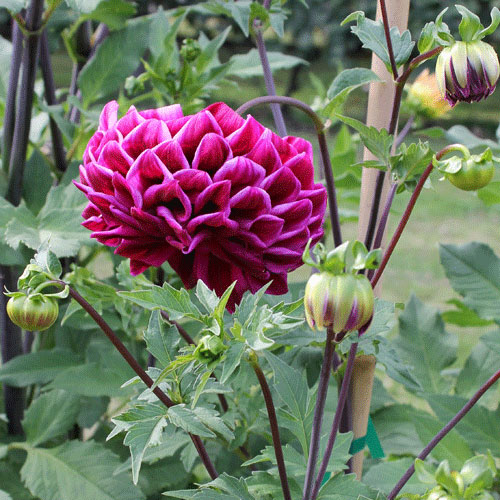Before it sells out early this year (as it always does), here’s a bit of history about big, beautiful ‘Jane Cowl’. Sent to us by our good customer Jim O’Donnell of Philadelphia, it’s from the November 1927 edition of Garden and Home Builder:
“In the large class at the American Dahlia Society’s show for seedlings” – which are dahlias that are not yet named or for sale – “not one of the more than thirty varieties exhibited could be casually passed by. Judging this rich amount of material occupied the gathered experts for some considerable time, and it was by no means an easy walkover for the winner; and yet, when Miss Jane Cowl [one of the most famous actresses of that era], who honored the exhibition with her presence on the first day, was invited to select out of the seedlings the one that should be named for her, she unhesitatingly and almost instantaneously decided on the same bloom that the judges had already selected for the big award.
“It would not be wise, however, to argue from this that the expert judges might be done away with. Miss Cowl, of course, selected the bloom that pleased her most without any regard to its comparative distinctiveness and other qualifications and standards by which the experts must measure any newcomer. There is, however, much satisfaction to be had in the fact that the popular favor and expert judgment in this instance, at all events, did coincide.”
See what Miss Cowl and the experts liked so much here, and if you decide you have to have it, be sure to order soon!















